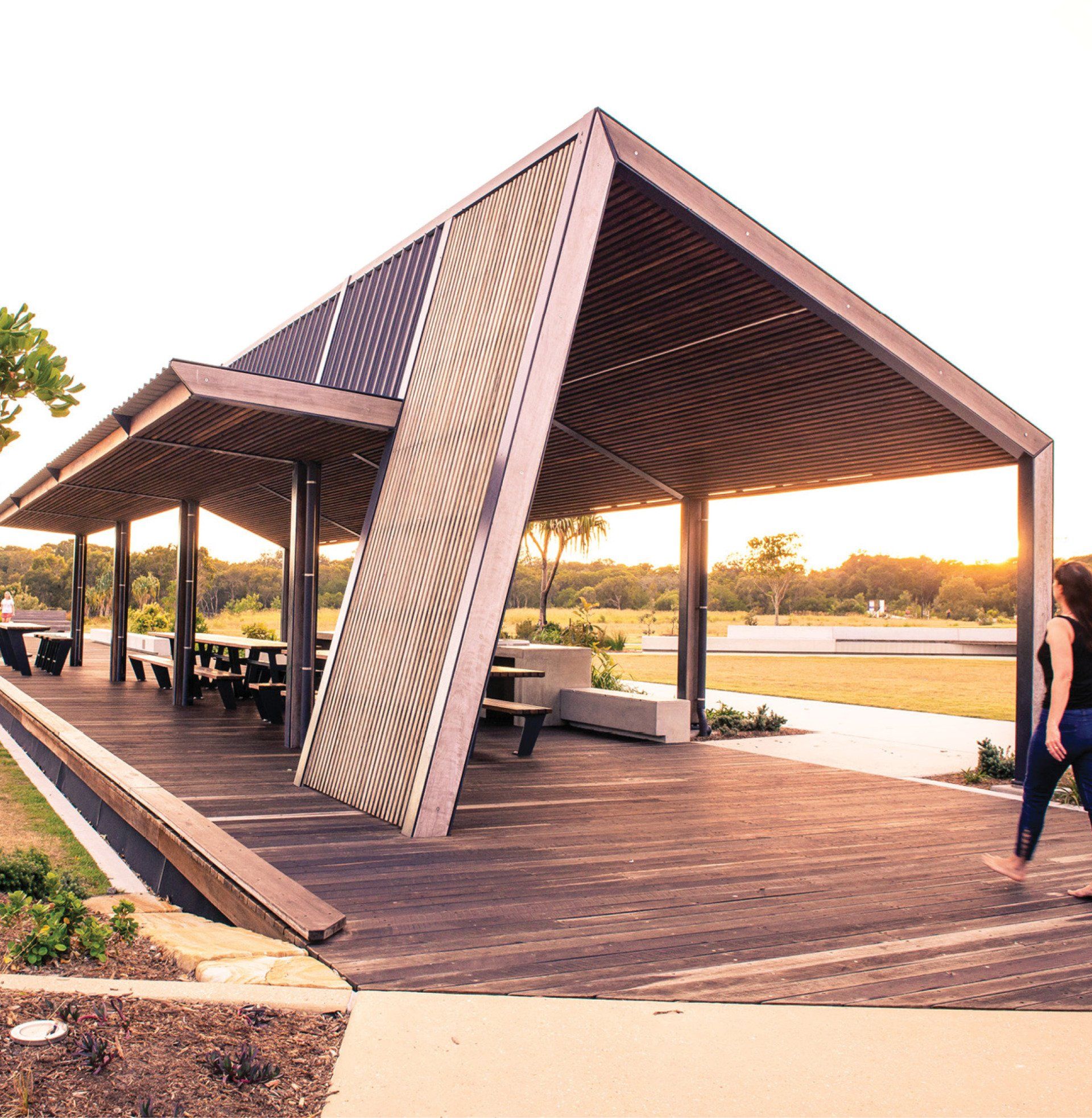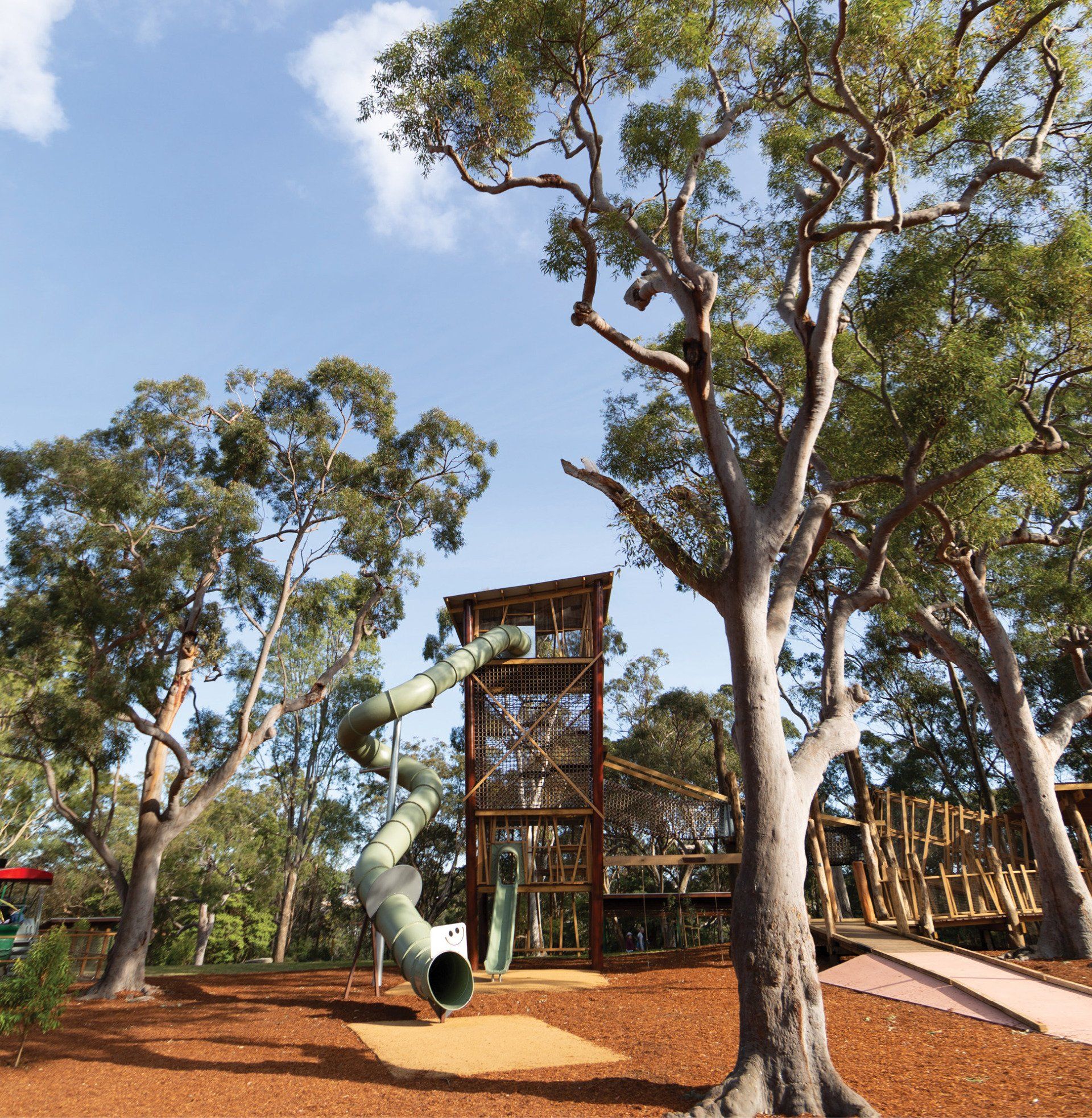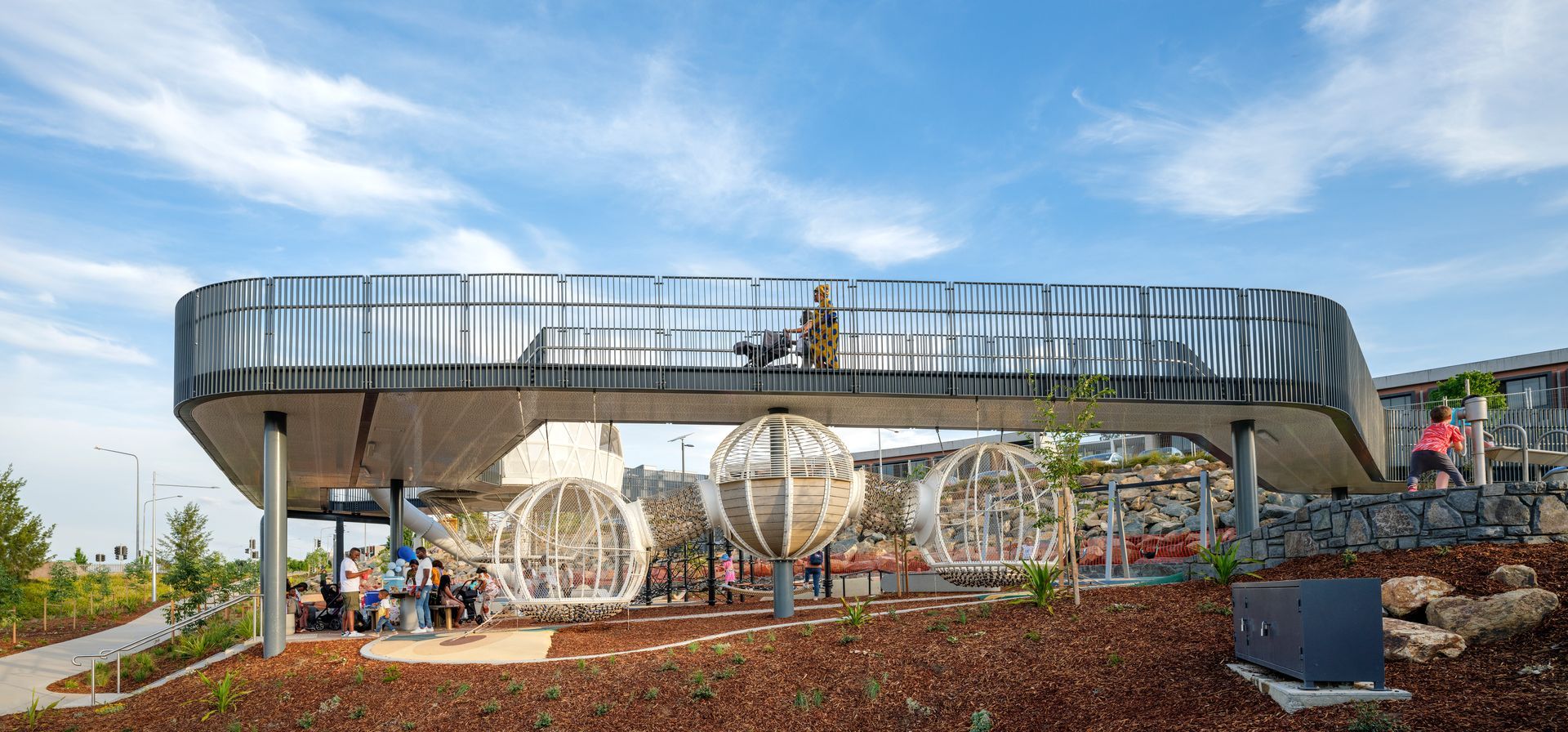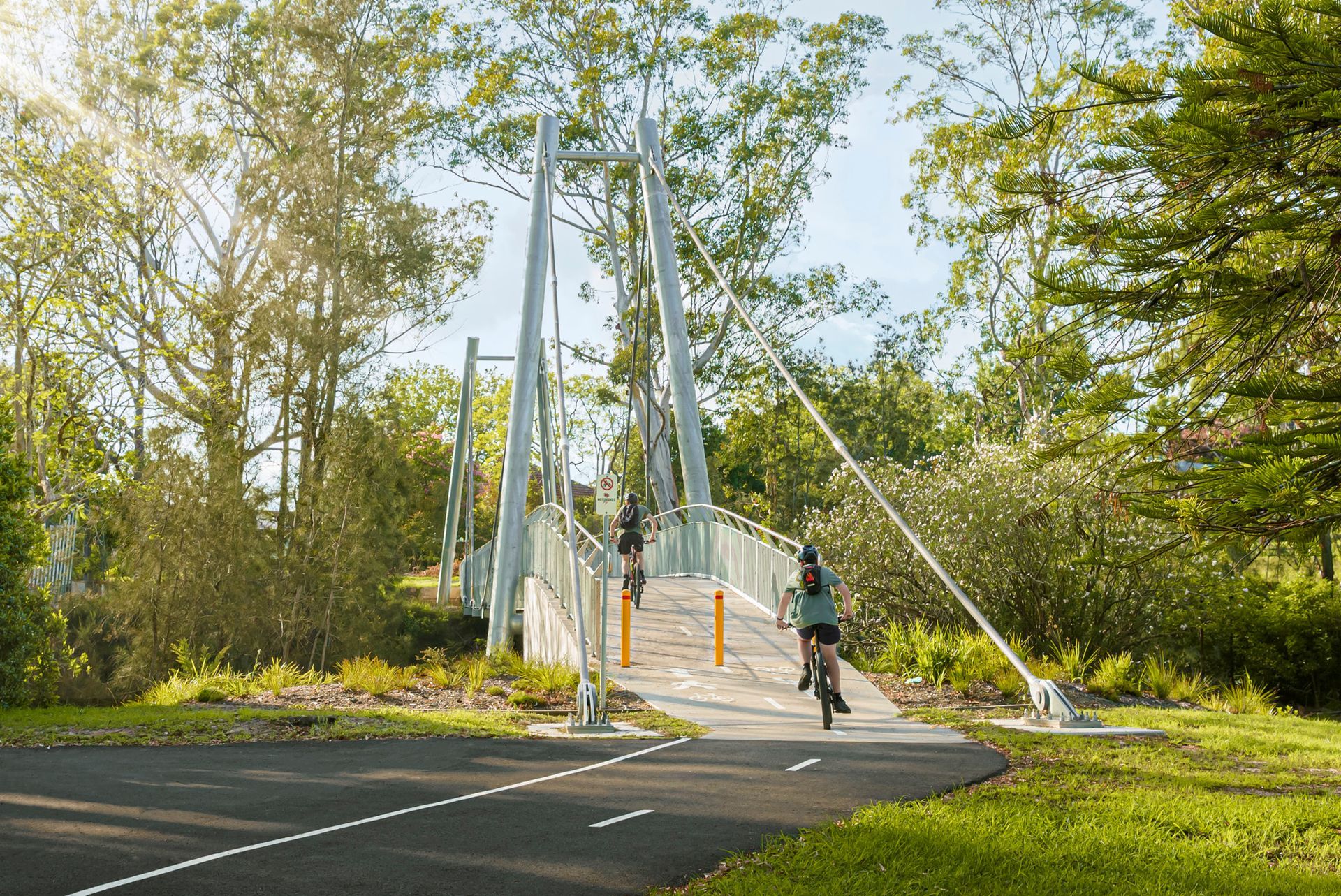Design secrets of long-lasting timber structures
There’s something wonderful about hardwood timber. From its natural touch and feel to its almost limitless design flexibility, we’ve been specifying native species like Ironbark, Spotted Gum and Blackbutt in our projects for decades. From bridges and boardwalks to play structures and shade shelters, we just love working with it – and so do the communities who get to enjoy the finished results.
We also know timber makes some councils and asset managers a little nervous when it comes to longevity and maintenance. Yet, in the vast majority of instances, these issues have very little to do with the timber itself, and far more to do with the way the structure has been designed, specified and finished.
“Timber often gets a bad rap when it comes to durability,” says Fleetwood Urban Design Lead, Mark Jol. “But it’s a perception that’s largely driven by incorrect usage.
The reality is sustainably-sourced Class 1 Australian hardwood timbers can be a hugely durable option when they’re properly designed and delivered. That’s why every Fleetwood timber structure is 100% bespoke, custom-created to optimise its design life and long-term performance.”
It all starts with the right specification.
There are hundreds of timber varieties available in Australia and choosing the appropriate one for your project is critical. “Specifying the right timber species and coatings directly increases operational life and reduces ongoing maintenance,” explains Mark Jol. “Will the structure be indoors or outdoors? Will it be in constant sun, wind or rain? Will it be fully or partially submerged? Will it be located in a marshy or coastal environment? The timber and coatings must be fit for purpose. We see timber structures imported from Europe that are somehow expected to withstand the harsh Australian climate, and they just don’t. Why is anyone surprised?”
Great design delivers great outcomes.
Beyond identifying the correct timber, adopting the right engineering and installation principles is equally critical. “These are hugely important design considerations, yet they’re often overlooked on many projects,” says Mark, who admits to being frustrated when he sees timber structures that, clearly, haven’t been designed to stand the test of time.
“Poorly designed and installed timber structures might only last 8-10 years – then when they fail, everyone blames the timber,” Mark explains. “Yet with the right design, knowledge and skills there’s simply no reason why they couldn’t last for 30-40 years or even more with just minimal maintenance. In fact, in the right circumstances it can be just left to grey off naturally – you don’t even need to touch it.”
Mark ends with an example. “There are bridges here in Australia that are only just being decommissioned now that were built over 100 years ago. They’re not plastic. They’re not concrete. They’re made from hardwood timber and they’ve delivered generations of reliability and performance for local communities. We bring exactly the same approach to every timber structure we create at Fleetwood, which means in most cases it will still be standing long after we’re gone!”
Considering timber for an upcoming project?
Talk to Mark Jol and our timber experts today.
Check out some of the projects Fleetwood have completed using timber...
More from Fleetwood Files.
Explore
Certifications
Environmental Management : ISO14001
Quality Management : ISO 9001
OHS Management : ISO 45001
All Rights Reserved | Fleetwood Urban | Privacy Policy







